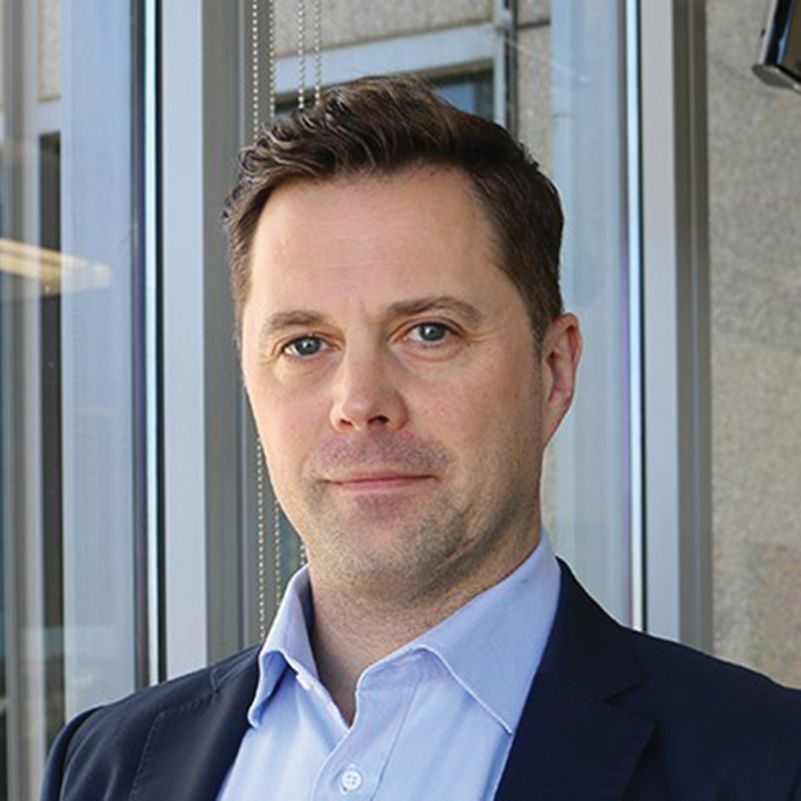fix trading community members discuss how they address industry challenges through the organization.
Our Trading Community: Conversations with FIX Community Members across the Asia Pac region
Winnie Khattar, Head of Market Structure, iShares, BlackRock & FIX APAC ETF Working Group Co-Chair

Day job – my key focus
In my role as head of market structure for our ETF and indexing investing businesses, I provide thought leadership and content on ETF market structure across equities and bond markets. This is done in regular collaboration with regulators, policymakers, and ecosystem participants to advocate for modernizing the ETF ecosystem and advancing rules for ETF adoption. Internally we operate as a tight-knit unit to ensure we are globally aligned and representing views across businesses, public policy group, trading, liquidity, and lending groups. I also provide strategic oversight on secondary market trading of our ETFs, ensuring we are a leader in ETF market quality, and there’s sufficient on-screen trading, liquidity, and resiliency in our products across the Asia-Pacific region.
FIX Trading Community – my journey and benefits
My journey with the FIX community began in 2018 when I attended a FIX Next Generation event. Prior to that, I had participated in various FIX conferences, which were excellent networking events and played the key role in uniting the trading industry. Being part of FIX and leading some of their industry initiatives has been rewarding. My involvement extends beyond the technical aspects of supporting standards across Asian jurisdictions and their corresponding market structures. FIX offers the platform to bring industry stakeholders together, consolidate all opinions, and fosters consensus for more efficient and sustainable growth in Asia-Pacific markets.
FIX initiatives – our focus and industry challenges
When we started the FIX Asia-Pac ETF Working Group, we wanted to address the absence of industry consensus on ETF challenges. As co-chair, I see our group as a platform for industry participants’ collaboration. Following industry feedback, discussions in our meetings have been on focused on solutions for Hong Kong ETF market’s primary processes, including creation/redemption, and how to bring delivery versus payment (DVP) settlement process. As a cross-industry, representative group of ETF market practitioners, we see opportunities for ETF ecosystem developments in Singapore as well as Hong Kong where we share feedback with the exchanges, aiming to enhance the Asia-Pacific ETF landscape for trading and investments.
Benefits of FIX conferences – an invaluable platform
Participating as a panelist at FIX conferences offers a unique platform to bring our views and challenges from various industry discussions to a bigger stage. These events are key in the Asia-Pacific trading and technology industry, allowing us to amplify our voice, share insights, and shape consensus. As participants and panelists, we represent not only our firms but also the collective industry voice, highlighting challenges and collaborating with other experts to shape our market’s future.
In conclusion, the ETF market structure is ever-evolving. Active participation in initiatives like FIX and the FIX Asia-Pac ETF Working Group is crucial to drive positive changes. Through collaboration and finding consensus, we can shape a resilient and efficient ETF ecosystem in the Asia-Pacific region. •
Murrough O’Brien, Head of Cboe BIDS APAC & FIX Australia Working Group Co-Chair

My day job
In my role at Cboe Australia, formerly Chi-X Australia, I oversee one of our key products, Cboe BIDS Australia, which is a block trading venue we launched in March this year (Editor’s note: see page XX for more information about the launch of Cboe BIDS Australia). We will also be launching a Cboe BIDS service in Japan soon, with further APAC markets hopefully to come (all subject to regulatory approvals). Cboe BIDS Australia operates as an exchange dark pool, primarily catering to brokers, but it also engages with fund managers, asset owners, and integrating vendors. My daily responsibilities involve interactions with brokers, buy-side users, and to a degree, vendors, managing the operations and roll-out of Cboe BIDS for the region.
My journey with FIX
My journey with FIX and its community began during my time in London, working in global institutions like Citi. Moving to Australia, I found it to be a vibrant and distinctive financial community. Seeking to engage with the broad trading community, I turned to FIX, known for its strong participation by buy-side and sell-side stakeholders through meetings, conferences, and various industry initiatives. I believe it’s crucial to contribute to the Australian financial industry, and FIX offers me the means to do so through conferences, steering committees, working groups, and my current role as co-chair of the local working group.
Benefits of participating in the FIX Trading Community
Participation in FIX benefits member firms by fostering community engagement in financial markets. It brings together sell-side and buy-side professionals to address day-to-day issues, be they regulatory, market structural, or the introduction of new products like ETFs in the Australian market. This communication and engagement, both locally and in the broader FIX community globally, are crucial for the industry’s development and growth.
Australia Working Group’s focus
As a co-chair of FIX Australia Working Group, my major focus, alongside other Working Group members, is our industry conference in October. This is one of Australia’s largest trading-related conferences, known for its expert speakers and panels, as well as audience engagement. In addition to conferences, we organize events such as discussions around successful ETF market making, providing insights into the enhancement of ETF development in Australia.
We are also committed to supporting the next generation of industry leaders through the FIX NextGen Initiative, offering networking opportunities with industry peers, clients, and existing FIX leadership. We’re also expanding our FIX community’s reach, engaging with markets like New Zealand, where NZX has become increasingly involved with our working group.
FIX areas of interest
Outside of our initiatives, I’m also involved in the APAC ETF working group. This group addresses unique challenges faced in Asia-Pacific regarding the growth of ETFs. Unlike Europe and the US, where ETFs are mature products, Asia presents complexities, partially due to regional fragmentation. As ETFs gain momentum in major Asian markets, we are working across the FIX community to navigate these challenges more efficiently.
Overall, my involvement in FIX and its community has allowed me to contribute to the growth and development of the Australian financial industry. FIX’s commitment to collaboration and knowledge exchange is invaluable in the ever-evolving financial landscape. •
Wu Shaoping, FIX China Working Group Co-Chair

What’s the key focus of your group?
The focus for the FIX China Working Group is to promote FIX, so that more financial information professionals (whether technical or business-focused), understand the FIX family of standards, including recognizing that FIX standards are the common international industry standard, and understanding their benefits. For more technical personnel, they can go deeper to promote the latest FIX capabilities, understand industry needs, and provide input/help.
Secondly, as an expert of the industry standardization community in China, we can help domestic Chinese standards partially refer to and access the FIX standard as required. Finally, we recommend potential FIX member firms and keep an overview of the interactions and industry challenges raised on the online FIX Trading Forum.
How did you first get involved with FIX and the community? What do you see as the benefits of being involved with the FIX Trading Community?
The China trading community have been actively interacting with the FIX organization since 2004, inviting relevant personnel to meet and discuss, and holding offline forums in China. The main benefits of participating in the FIX trading Community are to interact with the world’s leading technical professionals to understand the latest technology trends and solve trading problems using standards.
FIX initiatives – what has your working group focused on recently, and why?
From your perspective, what are the industry opportunities that may be of most interest to your working group? We have recently focused on Simple Binary Encoding (SBE) and Google Protocol Buffers (GPB), and potential new systems that will grow their industry adoption in the future. We realize that while established FIX communication technology has its advantages, it also has its challenges. As demand changes, new technology solutions are required.
The China trading community are glad to see that the FIX Trading Community is constantly adapting, improving and introducing diverse solutions to problems. We recognize that a single, perfect solution is unlikely, so finding the best solution is the ideal, with demand driven by practice and experience. We hope that increased practical application and implementation will help shape the development of FIX standards and associated technologies. This bottom-up feedback approach mechanism is beneficial to all.
FIX meetings and webinars – What would you say are the main benefits of attending FIX Trading Community meetings/webinars/conferences?
Industry communication and interaction offer the most beneficial opportunities. While some of this has slowed in recent years due to the impact of Covid, participation in offline meetings or online seminars is a good system for information sharing, and it will continue to grow in the future. •
Jay Hurley, MD, Regional Head of eFX APAC, State Street & FIX FICC Committee Co-Chair

My day job
eFX is in the center of the FX ecosystem, connecting a variety of clients, for example, corporates, asset managers, sovereign wealth funds, insurance, banks, central banks, brokers and retail investors. As the regional head of eFX for APAC at State Street, I also cover a wide geographic range with different regulatory regimes. My main goal is to ensure that we consistently deliver high-quality FX liquidity during APAC trading hours (as part of a 24-hour, ‘follow the sun’ model) and for APAC clients trading globally, while managing risk and complying with regulations. These all keep me excited and engaged with the FX market.
FIX Co-Chair – How did you first get involved with FIX and the community? What do you see as the benefits of FIX initiatives?
I started my career as an equities developer where FIX connectivity was already the standard and was essential to understand. When I moved to the FX space in 2003, it became apparent that the same level of support for the FX asset class was not present in the FIX protocol, and I initially joined the FX Working Group Technical Committee that was working closely with the Business Practices Committee to codify FX workflows. It was a multi-year effort involving a diverse range of sell-side, buy-side and FX platforms to finalize the FX service pack, and then several more years to push for wider industry adoption.
FIX initiatives – what are the main initiatives that you and your committee are focused on? What are the industry challenges that these initiatives are looking to solve?
Three initiatives are in progress:
• Taking the UK Investment Association standard for reject codes definitions and incorporating this into the FIX standard so that the buy side can understand the cause of rejects across multiple providers. This is especially relevant after the Global FX Committee (www.globalfxc.org) Execution Principles Working Group issued a report on last look in 2021.
• Standardizing the communication of fixing conventions for non-USD NDF crosses. This has been a long-running issue for the sell-side and buy-side that currently requires manual intervention and where miscommunication of fixing conventions often leads to operational losses.
• T+1 settlement for US equities will have a significant impact on how the buy-side manages their FX workflows. While trading T+1 is already possible using the existing FX FIX specification, it is worth exploring whether there are best practices that could be documented, or whether there is extra information that could be made part of the process which will improve efficiency when the window to execute FX trades becomes shorter.
Your FIX conference experiences – What would you say are the main benefits of attending the FIX Trading Community conferences?
I’ve had the opportunity to attend the Hong Kong Asia Pacific Trading Summit since 2008, as well as the FIX conferences in Singapore and London. The quality of the content has been consistently high and often entertaining, but it is especially the contacts that I have made over the years that have been the most significant contribution to my career. The FX market has developed massively since the start of electronic trading in 1999, and being able to put together an industry group to solve common problems is a powerful force for change. •
